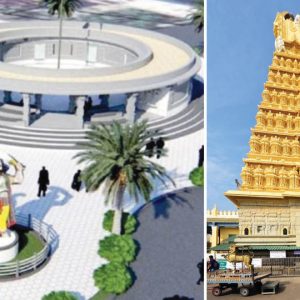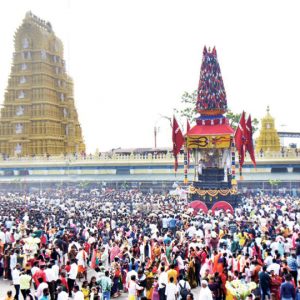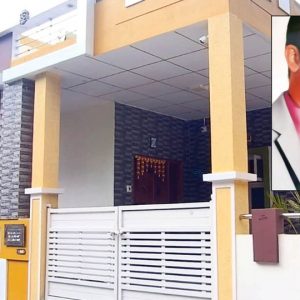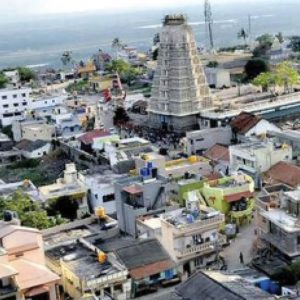Great-granddaughter recalls his invaluable contribution as a horticulturist, architect
Mysore/Mysuru: A documentary on the life of German Horticultural legend Gustav Hermann Krumbiegel who designed the famed Brindavan Gardens at the KRS Dam and also Bengaluru’s Lalbagh Botanical Garden will be released tomorrow (Nov. 29).
Titled ‘The Maharaja’s German Gardener’, the documentary will premiere at Bangalore International Centre and will also be released on YouTube. The event will be held between 6.30 pm to 8 pm. The documentary is directed by Ganesh Shankar Raj of MINDIA Films and has been produced by the Consulate General of the Federal Republic of Germany.
The documentary narrates the story of Krumbiegel, who was born in Dresden in Germany and the time he worked at the Royal Botanical Gardens in Kew, England. It tells the audience how Maharaja Sayajirao Gaekwad III, the ruler of Baroda, persuaded Krumbiegel to leave England to India where he designed and landscaped many gardens that are alive and flourishing even now.
Director Ganesh Shankar Raj decided on the project after a chance meeting with the Krumbiegel’s great-granddaughter Alyia Krumbiegel at the Mythic Society five years ago.
Excited about the documentary, Alyia Krumbiegel, who lives in the United Kingdom told Star of Mysore over phone, “I was impressed to meet Ganesh Shankar Raj who has so much interest in my great grandfather’s life story which is indeed a story that deserves to be told, and here we are five years later. Amid the COVID pandemic, the film was made with so many restrictions. In fact, the UK went into a complete lockdown the day after I was filmed,” she said.
Renowned horticulturist remembered
“Anyone who has seen the Brindavan Gardens will agree that it is one of the finest creations a man can conjure. Unfortunately very little official records are available on the person who joined Mysore as Superintendent of Lalbagh for a sum of Rs. 600 and the term of engagement fixed for five years, ‘renewable as long as Gustav Krumbiegel continues to render satisfactory services’, ” she noted.
But the fact that he retired as the Director of Horticulture in 1932 and continued to serve even after retirement in various capacities and died in Bangalore in 1956 is an eloquent testimony to his invaluable contribution both as a horticulturist and architect.

A city’s identity
On the destruction of many heritage buildings and creations, she said, “While being the great-granddaughter of a man who left such a green legacy I do not have the absolute answer to the problems of saving heritage buildings and trees. We must accept that life is very different now than a century ago but people still need space and heritage in all forms,” she said. “Heritage buildings and trees are both arguably the physical component of a city’s identity. The lived-in architecture, the strategic locations and the uses of these buildings reveal unique stories telling of how our city came to be and can offer predictions of where it might be going,” she explained.
“These features add character and beauty to our city, fostering a sense of home and community, and serving as a reminder to each of us that our city’s history belongs to all of us together. Just as these magnificent buildings have been passed down to us, we must preserve them for future generations,” she said.
Saving for next generation
“We have to remember all that we do and how we act is teaching the next generation who will walk in our footsteps one day. I fear if we do not realise this, our next generation will never forgive us. If it has taken maybe one generation to almost ruin this planet, I’m hoping that maybe it will only take one generation to fix it,” she said.
In a sort of an appeal, Alyia Krumbiegel said, “We need to create the footprints we want the next generation to walk in. Spare a few minutes sitting under a tree to celebrate the man who was German by birth but his heart always belonged to India and I know he will be smiling.”








Recent Comments